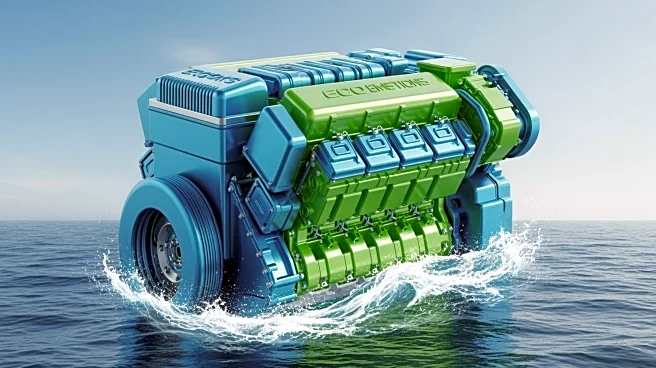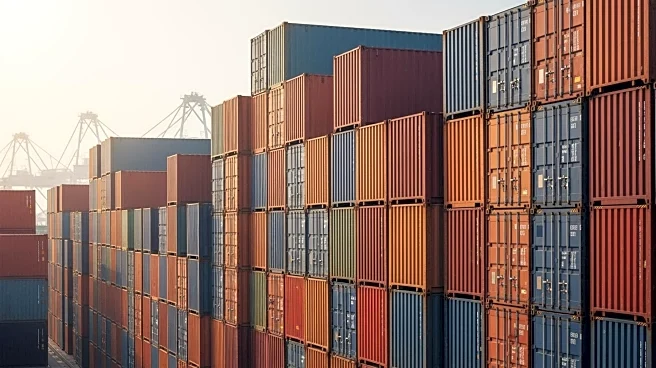What's Happening?
The global ship rudders market is projected to grow significantly, reaching $2.64 billion by 2029. This growth is attributed to several factors, including the rise of green shipping initiatives, increased global trade, and the adoption of electric propulsion
systems. The market, valued at $2.05 billion in 2024, is expected to see a compound annual growth rate (CAGR) of 5.5% over the forecast period. The Business Research Company (TBRC) highlights the importance of ship rudders in cargo transportation, noting their role in steering, port maneuvering, and collision avoidance. The Asia-Pacific region is anticipated to experience the fastest growth in this sector.
Why It's Important?
The expansion of the ship rudders market is significant for the shipping industry, as it aligns with global efforts to reduce carbon emissions and promote sustainable practices. Green shipping initiatives are becoming increasingly important as countries and companies seek to minimize their environmental impact. The growth in this market also reflects broader trends in global trade and the shipbuilding industry, which are crucial for economic development. Stakeholders in the shipping industry, including manufacturers and logistics companies, stand to benefit from advancements in rudder technology and increased demand for efficient navigation systems.
What's Next?
As the market continues to grow, companies involved in ship rudder manufacturing and related technologies may invest in research and development to enhance product offerings. The focus on green shipping initiatives is likely to drive innovation in rudder design and functionality. Additionally, the expansion in arctic shipping and the embracement of electric propulsion systems may lead to new opportunities and challenges for industry players. Stakeholders will need to adapt to changing regulations and consumer preferences to remain competitive.
Beyond the Headlines
The shift towards green shipping initiatives and the growth of the ship rudders market may have broader implications for environmental policy and international trade agreements. As countries prioritize sustainability, there may be increased pressure on shipping companies to adopt eco-friendly technologies. This could lead to changes in industry standards and practices, influencing global trade dynamics and environmental regulations.













